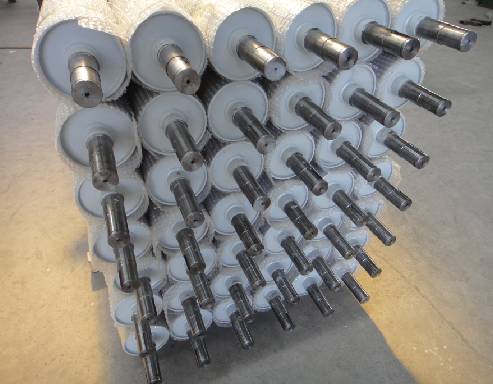 Afrikaans
Afrikaans  Albanian
Albanian  Amharic
Amharic  Arabic
Arabic  Armenian
Armenian  Azerbaijani
Azerbaijani  Basque
Basque  Belarusian
Belarusian  Bengali
Bengali  Bosnian
Bosnian  Bulgarian
Bulgarian  Catalan
Catalan  Cebuano
Cebuano  Corsican
Corsican  Croatian
Croatian  Czech
Czech  Danish
Danish  Dutch
Dutch  English
English  Esperanto
Esperanto  Estonian
Estonian  Finnish
Finnish  French
French  Frisian
Frisian  Galician
Galician  Georgian
Georgian  German
German  Greek
Greek  Gujarati
Gujarati  Haitian Creole
Haitian Creole  hausa
hausa  hawaiian
hawaiian  Hebrew
Hebrew  Hindi
Hindi  Miao
Miao  Hungarian
Hungarian  Icelandic
Icelandic  igbo
igbo  Indonesian
Indonesian  irish
irish  Italian
Italian  Japanese
Japanese  Javanese
Javanese  Kannada
Kannada  kazakh
kazakh  Khmer
Khmer  Rwandese
Rwandese  Korean
Korean  Kurdish
Kurdish  Kyrgyz
Kyrgyz  Lao
Lao  Latin
Latin  Latvian
Latvian  Lithuanian
Lithuanian  Luxembourgish
Luxembourgish  Macedonian
Macedonian  Malgashi
Malgashi  Malay
Malay  Malayalam
Malayalam  Maltese
Maltese  Maori
Maori  Marathi
Marathi  Mongolian
Mongolian  Myanmar
Myanmar  Nepali
Nepali  Norwegian
Norwegian  Norwegian
Norwegian  Occitan
Occitan  Pashto
Pashto  Persian
Persian  Polish
Polish  Portuguese
Portuguese  Punjabi
Punjabi  Romanian
Romanian  Russian
Russian  Samoan
Samoan  Scottish Gaelic
Scottish Gaelic  Serbian
Serbian  Sesotho
Sesotho  Shona
Shona  Sindhi
Sindhi  Sinhala
Sinhala  Slovak
Slovak  Slovenian
Slovenian  Somali
Somali  Spanish
Spanish  Sundanese
Sundanese  Swahili
Swahili  Swedish
Swedish  Tagalog
Tagalog  Tajik
Tajik  Tamil
Tamil  Tatar
Tatar  Telugu
Telugu  Thai
Thai  Turkish
Turkish  Turkmen
Turkmen  Ukrainian
Ukrainian  Urdu
Urdu  Uighur
Uighur  Uzbek
Uzbek  Vietnamese
Vietnamese  Welsh
Welsh  Bantu
Bantu  Yiddish
Yiddish  Yoruba
Yoruba  Zulu
Zulu conveyor impact bar
Understanding Conveyor Impact Bars Importance and Applications
Conveyor systems are integral to many industries, facilitating the efficient movement of materials from one point to another. Within these systems, various components play crucial roles in ensuring smooth operation, and one such component is the conveyor impact bar. Understanding what impact bars are, their functions, and their significance in conveyor systems can help businesses optimize their operations.
What are Conveyor Impact Bars?
Conveyor impact bars are specialized components mounted on conveyor systems to cushion the impact of materials that fall onto the belt. Typically made from robust materials, such as polyurethane or rubber, impact bars are designed to absorb shock and prevent damage to both the conveyor belt and the materials being conveyed. They are usually positioned at load zones where materials are fed onto the conveyor belt, thereby providing a protective barrier against the initial force of falling loads.
Functions of Conveyor Impact Bars
1. Protection of Conveyor Belts One of the primary functions of impact bars is to protect conveyor belts from wear and tear. When heavy materials drop onto the belt, the impact can cause significant damage over time. Impact bars absorb this shock and help to mitigate potential damage, extending the lifespan of the conveyor belt.
2. Reduction of Material Damage Apart from safeguarding the conveyor belt, impact bars also protect the materials being transported. When materials fall from a height onto a hard surface, they can be crushed or broken. The cushioning effect provided by impact bars minimizes this risk, maintaining the quality of the materials.
3. Improved Safety By reducing the risk of material spillage and damage to the conveyor system, impact bars contribute to a safer working environment. They minimize hazards associated with both moving parts and falling materials, thus protecting both workers and equipment.
4. Noise Reduction Impact bars can also play a role in reducing noise levels generated by conveyor operations. The cushioning effect dampens the sound produced when materials hit the conveyor belt, leading to a quieter work environment.
Types of Conveyor Impact Bars
conveyor impact bar

There are several types of conveyor impact bars, each designed for specific applications and material types. The most common types include
1. Standard Impact Bars These are designed for general purpose and can handle moderate to heavy loads. They are versatile and widely used across various industries.
2. Heavy-Duty Impact Bars As the name suggests, these bars are built for more substantial loads and extreme conditions. They are often utilized in mining, quarrying, and other heavy industries where materials are transported in bulk.
3. Light-Duty Impact Bars Ideal for lighter materials and slower conveyor speeds, these bars are used in areas where impact is minimal.
4. Custom Impact Bars For specialized applications, custom impact bars can be engineered to meet specific requirements, ensuring optimal performance for unique operational needs.
Importance of Quality in Conveyor Impact Bars
Choosing the right impact bar is crucial for the effective functioning of a conveyor system. Quality impact bars, made from durable materials, provide superior protection and can withstand harsh operational conditions. Businesses should consider factors such as load weight, the height from which materials will drop, and environmental conditions when selecting impact bars.
Conclusion
Conveyor impact bars are an essential component of any conveyor system, serving to protect both the belt and the transported materials from damage. By cushioning the impact of falling loads, they enhance safety, reduce noise, and prolong the lifespan of equipment. As industries continue to rely heavily on conveyor systems for efficient material handling, understanding and investing in high-quality impact bars become even more crucial. Proper maintenance and timely replacement of these components can significantly enhance operational efficiency, making them a wise investment for businesses focused on maximizing productivity while minimizing downtime and operational costs.
-
Trusted Conveyor Solutions from Leading Conveyor Idler Roller ManufacturersNewsJun.27,2025
-
Reliable Return Idler Solutions for Efficient Belt Conveyor SystemsNewsJun.27,2025
-
Precision Conveyor Accessories for Streamlined Material HandlingNewsJun.27,2025
-
High-Quality Belt Conveyor Idler Solutions for Efficient Material HandlingNewsJun.27,2025
-
High-Performance Belt Conveyor Pulleys for Reliable Material HandlingNewsJun.27,2025
-
Enhancing Material Handling EfficiencyNewsJun.27,2025





























